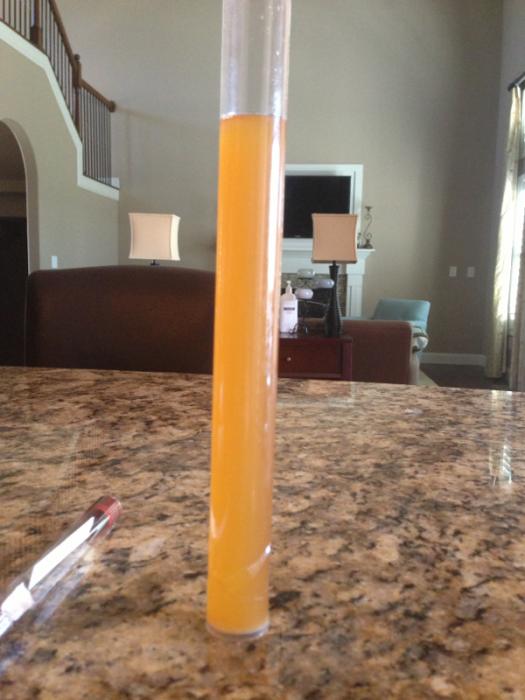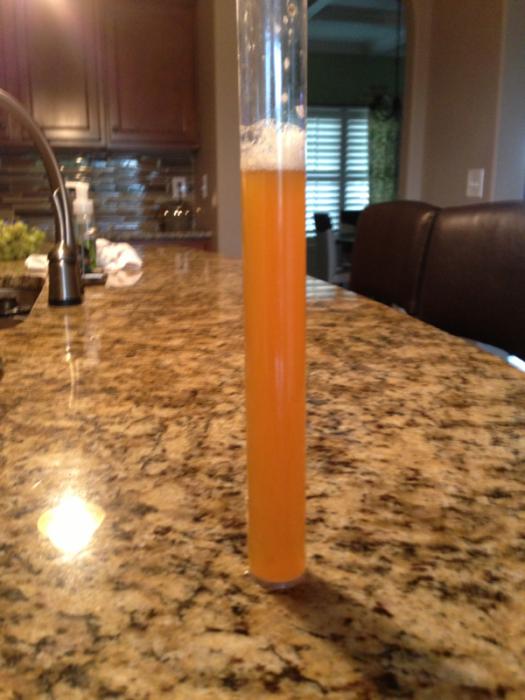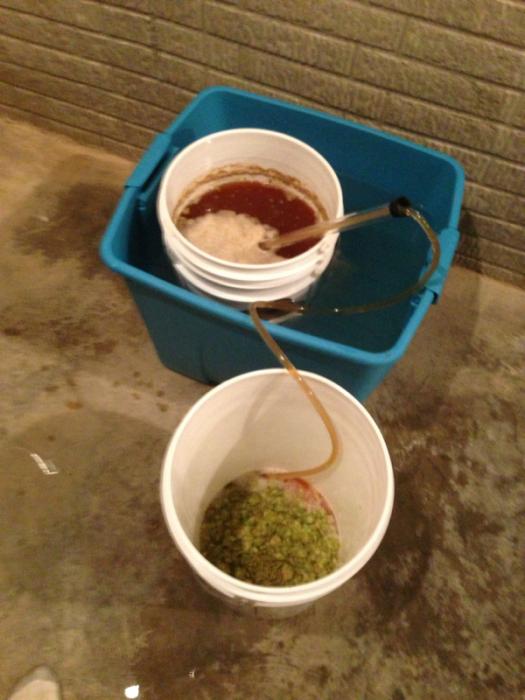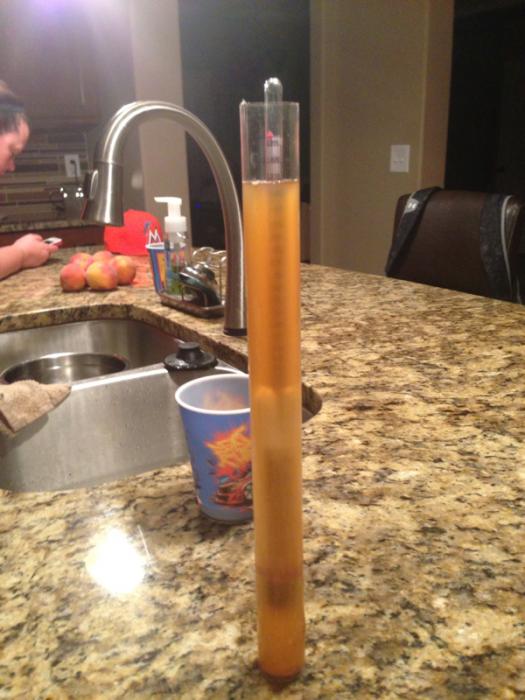MMJfan
Well-Known Member
Yeah I've never had it either. Care to share ur recipe yeast etc?
Here is the recipe I used that came straight from Vinnie at Russian River:
RECIPE TYPE: AG (BIAB)
BATCH SIZE: 5 GALLONS
OG: 1.070
FG: 1.011
IBU'S: 90-95
GRAINS
13.25 LB TWO-ROW PALE MALT
0.60 LB CRYSTAL 45 MALT (TRY 0.30 LBS OF CRYSTAL 40L)
0.60 LB CARAPILS (DEXTRIN) MALT
0.75 LB DEXTROSE (CORN) SUGAR
HOPS
3.50 OZ COLUMBUS* 13.90% A.A. 90 MIN.
0.75 OZ COLUMBUS* 13.90% A.A. 45 MIN.
1.00 OZ SIMCOE 12.30% A.A. 30 MIN.
1.00 OZ CENTENNIAL 8.00% A.A. 0 MIN.
2.50 OZ SIMCOE 12.30% A.A. 0 MIN.
1.00 OZ COLUMBUS* 13.90% A.A. DRY HOP (12 TO 14 DAYS TOTAL)
1.00 OZ CENTENNIAL 9.10% A.A. DRY HOP (12 TO 14 DAYS TOTAL)
1.00 OZ SIMCOE 12.30% A.A. DRY HOP (12 TO 14 DAYS TOTAL)
0.25 OZ COLUMBUS* 13.90% A.A. DRY HOP (5 DAYS TO GO IN DRY HOP)
0.25 OZ CENTENNIAL 9.10% A.A. DRY HOP (5 DAYS TO GO IN DRY HOP)
0.25 OZ SIMCOE 12.30% A.A. DRY HOP (5 DAYS TO GO IN DRY HOP)
*TOMAHAWK/ZEUS CAN BE SUBSTITUTED FOR COLUMBUS
YEAST
WHITE LABS WLP001 CALIFORNIA ALE YEAST OR
WYEAST 1056 AMERICAN ALE YEAST OR
US05 DRY YEAST
DIRECTIONS
MASH GRAINS AT 151°-153° F FOR 60 MINUTES
MASH OUT AT 170° F FOR 10 MINUTES
SPARGE AT 170° FOR 20 MINUTES
STIR IN DEXTROSE,AND BRING TO A BOIL. ADD HOPS AS INDICATED IN THE RECIPE. AFTER A 90 MINUTE BOIL, CHILL WORT TO 67° F (19° C) AND TRANSFER TO FERMENTER. PITCH TWO PACKAGES OF YEAST OR A YEAST STARTER
AND AERATE WELL. FERMENT AT 67° F (19° C) UNTIL FERMENTATION ACTIVITY SUBSIDES, THEN RACK
TO SECONDARY. ADD FIRST SET OF DRY HOPS ON TOP OF THE RACKED BEER AND AGE 7-9 DAYS, THEN
ADD THE SECOND SET. AGE FIVE MORE DAYS THEN BOTTLE OR KEG THE BEER.
I'm also going to be adding Amarillo in the dry hop additions. I'm going to add about 0.6 oz to each dry hop addition. And I used the US05 dry yeast in mine. I had some harvested 1056, but one of my kids left the door open to the fridge I store my yeast in and it had kind of a funky smell so I didn't want to risk ruining a brew with this much hops in it so I took the safe route and just used the dry US05 as I've heard it is a suitable substitute. Hope this helps...



![IMG_1127[1].jpg IMG_1127[1].jpg](https://cdn.homebrewtalk.com/data/attach/117/117354-IMG-1127-1-.jpg)
![IMG_1130[1].jpg IMG_1130[1].jpg](https://cdn.homebrewtalk.com/data/attach/117/117355-IMG-1130-1-.jpg)











